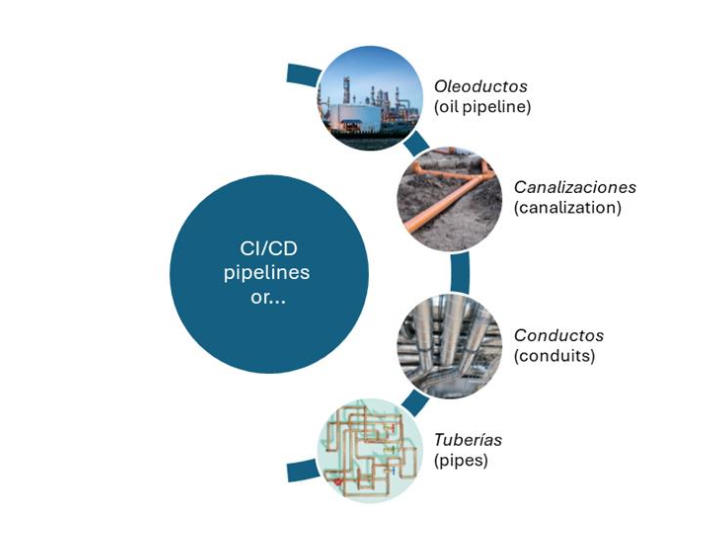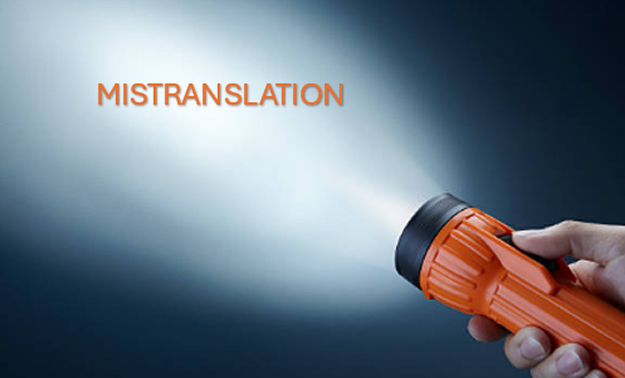
AI is transforming nearly every corner of business, and translation is no exception. While neural machine translation, the same underlying tech behind generative AI tools such as ChatGPT, has been around for over a decade, relying solely on machines still carries significant risks. AI simply isn’t intelligent enough (yet!) for every industry or every type of content. You want your global customers to be impressed by your content, not left laughing at unintentional errors.
We have compiled several examples that highlight the importance of keeping an expert human in the loop, based on the recent translation of a 3,000-word semi-technical whitepaper into Spanish using a popular AI translation engine.
1. "Permisos a la deriva” (permissions adrift)
In our example whitepaper, the machine translated “permission drift” as “permisos a la deriva”. While in English “drift” is used to describe technical environments drifiting away from established security standards or being lost at sea, in Spanish the expression “a la deriva” only has the meaning of being at the mercy of the winds/sea/circumstances. (In Spanish the correct cybersecurity term is “desviación”, literally “deviation”).
If the post-editing is not being done by a subject-matter expert, bad translations may be interpreted as a metaphor and left as is (as a “good enough” translation). Knowing your cybersecurity concepts (like “drift”, in this case) is therefore critical to avoid embarassment.


2. Inconsistent terminology
Variety is the spice of life, but not when it comes to terminology. Inconsistent translation of industry-specific terms can lead to misunderstandings in your documents. For instance, if “CI/CD pipelines” was translated in eight different ways within the same 3,000-word document, how could you highlight the importance of managing such a key aspect of modern software development?

In another example, “cryptographic keys” can become the keys on your keyboard/a piano, or the key you use to open a door, as the AI seems to randomly and inconsistently use one or the other in a “spin the wheel” fashion.

Similarly, you don’t want an inconsistent text where the reader won’t even know that “guías” (guides), “libros de jugadas” (books of moves) and “manuales” (manuals) are all in fact trying to refer to the same thing (“playbooks”). Don’t leave terminology choices to chance! You don’t want the message you so carefully crafted to get lost or muddled—and risk damaging your brand in key regions.
3. Not great with context
Neural machine translation engines are trained to recognise context within a single sentence, but they can struggle when there is any ambiguity in the text or when it needs to consider the context of an entire document. Trust the eagle eye of a subject-matter expert to identify cases where AI gets a little bit lost and translates concepts without taking context into account, a problem which could lead to mistranslations such as these:

Linter-only or partial scanning > Escaneado parcial con linterna o
The issue here is that, in Spanish, “linterna” means “flashlight”, so unless you are taking your development team on a camping trip, you won’t be needing any flashlights in your security toolkit.

Outcomes are documented and drive permission pruning. > Los resultados se documentan e impulsan la poda de permisos.
The issue here is that, in Spanish, “podar” means “to prune” in the sense of “cutting off or cutting back parts of a tree for better shape or more fruitful growth”.

SCA/IaC scan on build > Escaneo SCA/IaC en construcción
The issue here is that the AI failed to identify “build” as a part of the software development process and translated “on build” as “en construcción”, which in Spanish means “under construction”.

Simulated abuse cases in backlog > Casos de malos tratos simulados in backlog
In this case, the AI translation inadvertently introduced a very sensitive topic to the text, like in the above example, where “abuse cases” has become “malos tratos”, which in Spanish means “domestic violence”. This goes beyond creating confusion or embarassment to potentially making your readers actively uncomfortable.
While AI promises efficiency, it’s clear it’s not yet the infallible solution many hope for, particularly when precision and context are paramount. From technical “drift” to inadvertently offensive phrasing, the pitfalls of unreviewed or lightly/inexpertly reviewed AI translation can be costly and embarrassing. If you want your global content to be truly intelligent and impactful, rather than a source of unintentional amusement, the expertise of a human-in-the-loop isn’t just a luxury—it’s a critical safeguard.
